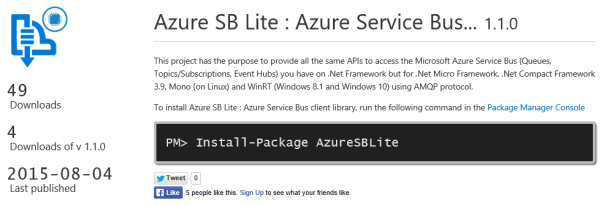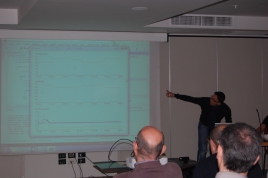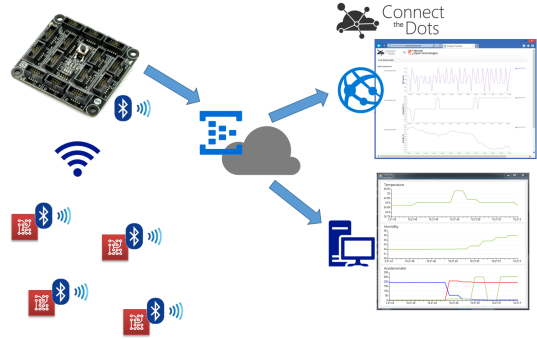Yesterday, the biggest manufacturer of .Net Gadgeteer devices announced a bad news to the community: they won’t produce the boards based on it anymore.
To be precise, they won’t abandoned the entire .Net Micro Framework development but “only” all the boards known for the simplicity of developing prototypes avoiding soldering but using simple socket instead.
Of course, I’m speaking about the GHI Electronics.
I have some of their great boards used in a lot of demos and examples on .Net Micro Framework development for the Internet of Things during my sessions around Italy. Today, I can understand their decision: .Net Gadgeteer was created by Microsoft but today there isn’t so much effort on it and the community isn’t so huge for bringing the framework to the next level. In the last years, GHI Electronics was alone in order to support this framework and having it alive. From my point of view, it’s a pity because using .Net Gadgeteer boards, the ideas become reality in a very short time: from the advantage of using socket connection for the hardware to the application development with C# and .Net Micro Framework. The way to a final product is very long … but as starting point it was good.
To this bad news, we can add the silence by SecretLabs about another well-known board in the .Net Micro Framework world: the Netduino.
Netduino was my first love starting from its first version (without Ethernet) to the latest WiFi board. I played a lot with it, learning .Net Micro Framework development, even without the simplicity of hardware connections because I like “flying wires”. Even SecretLabs tried to do something like .Net Gadgeteer with Netduino Go without so much luck (they used a completely different “standard” for that).
The bad news and the silence let me start thinking about the future of the .Net Micro Framework.
Of course, to be precise, the framework life isn’t related to the future of the maker platforms provided by GHI Electronics and SecretLabs, because some companies are designing their own boards for running it.
It was born in the Microsoft research laboratories as the SPOT (Smart Personal Objects Technology) framework presented in the 2002. It became .Net Micro Framework and after some years Microsoft decided to provide it as open source without focusing so much on its development. Developers started to use it but only for hobbystic projects; only few companies decided to start developing real world products.
With the new IoT business, a couple of years ago Microsoft re-started to focus on it showing a lot of demos all around the world (at Build as well) based on .Net Micro Framework devices connected to Azure services (even before IoT Hub but using Service Bus and Event Hub). It seems that today this strong support is ended … Microsoft wants to provide better Cloud experience (the “I” in the IoT business) for all kind of devices without any difference on the running operating system or framework.
It seems to be another bad news for developers who believe in the .Net Micro Framework but fortunately … it’s always open source and the community can change its destiny.
As an open source developers (you know, I work for Red Hat … the company leader on open source) I believe in community projects : I started to write a lot of open sourced code for .Net Micro Framework a bunch of years ago and the community helped me to improve my libraries.
Today, Microsoft is providing few “human” resources to the .Net Micro Framework project hosted on GitHub in order to make the big changes on it and coordinate the community: I agree on that … now the community has the framework in its hands. At same time I know the Microsoft guys who are supporting it … they are great guys … trust me !
I know a lot of great guys who are working on .Net Micro Framework for their commercial products and for this reason I’m confident in the future. I know that the community around it isn’t so huge and it could be a problem for having a platform used as primary choice for embedded development. It’s also true that embedded world (yes ! embedded … not IoT !) is so much heterogeneous and each developer has its preferences: there is space for all of them, from ARM mbed platform to the .Net Micro Framework itself for example.
In the last months the interest about .Net Micro Framework was revamped by the new LILIUM project; to be precise it’s not the new version of the framework which has its own roadmap but a new way to develop in C# and UWP on embedded devices with the power of pre-compiled native code !
In order to define the right way for the community effort, two interesting discussions were opened on GitHub and all the main protagonists are arguing on the objectives and the roadmap: this is the essence of “to be a community”.
The first one is focused on the future of the .Net Micro Framework and its version 5 (today we are at 4.4) and the other one on the differences with LILIUM project; it’s worth for you to follow them both.
Let’s see … the IoT business opened a lot of scenarios … no doors are closed … can the open source nature and the community bring embedded C# development to a new life ?










